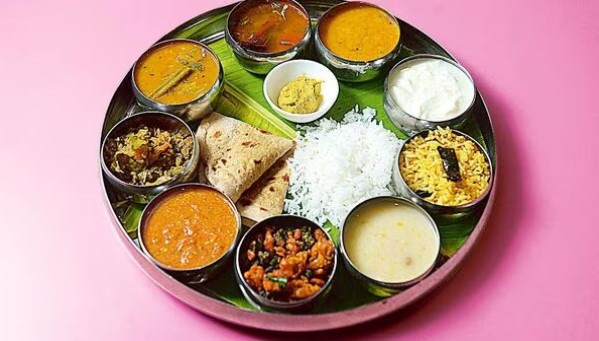
NEW DELHI : Soaring prices of vegetables, especially tomatoes, onions, and potatoes, have placed a heavy burden on the poor, who spend the bulk of their income on food. According to a Crisil study, the cost of a typical vegetarian thali, commonly consumed across several parts of India, has surged by a third in just a month.
The cost of preparing a vegetarian thali at home surged by 28% in July from the preceding month due to the jump in prices of vegetables and spices. The cost of a non-vegetarian thali rose by a relatively moderate 11%, Crisil said.
The cost of a vegetable thali rose to ₹33.7 in July from ₹26.3 in June and ₹26.5 in July last year. On the other hand, the cost of a non-vegetarian thali spiked to ₹66.8 in July from ₹60 in June and ₹61.3 last July, the report found.
“The cost of a thali rose sequentially for the third month in a row in July and inched up year-on-year for the first time this fiscal, mainly due to soaring tomato prices," rating agency Crisil said in a report. A vegetarian thali comprises roti, vegetables such as onion, tomato and potato, rice, dal, curd, and salad. For a non-vegetarian thali, chicken was considered instead of dal.
A quarter of the increase in the cost of the vegetarian thali can be attributed to the skyrocketing tomato costs, which more than tripled to ₹110 per kilogramme (kg) in July from ₹33 in June.
For over six weeks now, tomato prices have continued to rise despite the central government’s intervention to rein in prices through the National Cooperative Consumers’ Federation of India (NCCF) and the National Agricultural Cooperative Marketing Federation of India (NAFED). Both NCCF and NAFED have been procuring tomatoes from the southern states and making them available in several north Indian cities at subsidized rates of ₹70 a kg.
Despite a slight reduction in the last week of July to ₹100-150 a kg, retail tomato prices have surged again to ₹250-300 in some metros.
The Reserve Bank of India (RBI), in its latest monthly bulletin in July, had expressed “major concern" over the spike in tomato prices, which is an offshoot of a dip in supplies due to crop damage resulting from inclement weather and pest attacks in the major production belts. “Historically, tomato prices have been an important contributor to volatility in overall inflation. Its volatility also gets transmitted to prices of other vegetables in both retail and wholesale markets," according to RBI’s Bulletin released on 17 July. The report stressed that the “unhinging of inflation expectations remain a major concern".
Tomato contributes about 0.57% to the total vegetable basket of 6.04% in the Consumer Price Index’s food and beverages basket.
Other than tomato, prices of onion and potato shot up 16% and 9% in July from the preceding month, respectively, contributing further to the increase in cost.
Onion prices are expected to increase significantly to ₹60-70 per kg in the retail market from early September on a likely shortfall in supplies.
“Rabi stocks in the open market are expected to decline significantly by the end of August instead of September, extending the lean season by a fortnight or so, which is likely to expose the market to tightened supplies and high prices," said Pushan Sharma, the director of research at Crisil Market Intelligence & Analytics.
Sharma further said, “Prices should soften as supplies improve in October."
Currently, onions are being sold at around ₹30 per kg.
Higher chilli and cumin prices also added to thali costs. While chilli prices rose 69% in July from the preceding month, cumin prices jumped 16%.
“However, given the lower quantities of these ingredients used in a thali, their cost contribution remains lower than some of the vegetable crops," the Crisil report said.
The cost of a non-vegetarian thali went up at a slower pace as the price of broilers, comprising more than 50% of the cost, likely declined 3-5% on-month in July.
A 2% monthly decline was also noticed in the price of vegetable oil which provided some respite from the increase in the cost of both thalis.





















